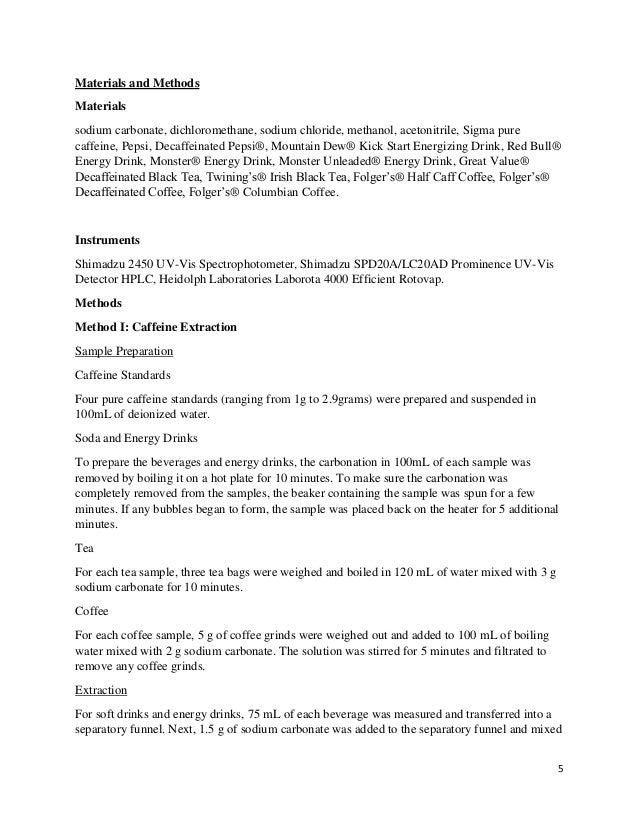Extraction Of Caffeine From Tea Lab Report

A pure product of 065 g caffeine was obtained.
Extraction of caffeine from tea lab report. Since caffeine is more soluble in dichloromethane 140 mg ml than it is in water 22 mg ml it readily dissolves in the dichloromethane. Extraction of caffeine from tea abstract the method used to separate the organic compound from a mixture of compound is the extraction. The solvents used in the experiment were an aqueous sodium carbonate and dichloromethane dcm. Which type of tea leaves white green and black has the most amount of caffeine.
It is done by the dissolving of one or more compounds in a good solvent. The solvent which was used in this experiment was 15 ml of dichloromethane into 125ml of water. The overall steps in the extraction and purification of caffeine from lipton tea are outlined in scheme 2below. Table of information graph of weight extraction and purification method part 1.
Extracting caffeine from tea extracting caffeine from tea leaves research question. The purpose of this experiment was to perform a liquid liquid extraction method to extract the caffeine from the tea bags that were provided and then recrystallize the caffeine. Procedure add about 10 0 g of tea leaves to around 100 ml of water in a 400 ml beaker cut open the tea. The solubility of caffeine is 22 mg ml 25 c and 670 mg ml 100 c.
We got 9 6g of crude caffeine and it contained some purities. Data and results caffeine extraction worksheet tea extract description data 1 volume of extract ml amount of caffeine in extract mg ml hplc sample 1 2 total caffeine in 100 ml sample 3 tare weight of rb flask 4 final weight of flask dried caffeine 5 crude caffeine isolated mg 4 3 6 yield of crude caffeine 5 2 100. This is essentially the same procedure used to decaffeinate drinks such as coffee and tea. While cellulose is insoluble in the water the tannins and chlorophyll will extract along with the caffeine into the water.
This gave calculated values of 59 1 recovery and 40 9 error. Crude caffeine is extracted from tea or coffee our experiment was on tea. Use an organic solvent to extract the caffeine and related compounds from the water. Caffeine lab 1 isolation of caffeine from tea in this experiment caffeine will be extracted from tea leaves where it is about 5 present using hot water.
It became crude due to the lower boiling point of pure caffeine than the impurities. Caffeine has a higher affinity for certain organic solvents than water at room temperature and can therefore be isolated from tannins flavins and chlorophylls using a simple liquid liquid extraction. Caffeine was extracted from tea by the use of solid liquid and liquid liquid extractions. Therefore pure caffeine went through the direct change of state before the impurities.
Extraction of caffeine step 4. Anhydrous calcium chloride pellets were used to dry the solution and emulsion layer and the dcm was then decanted.










































